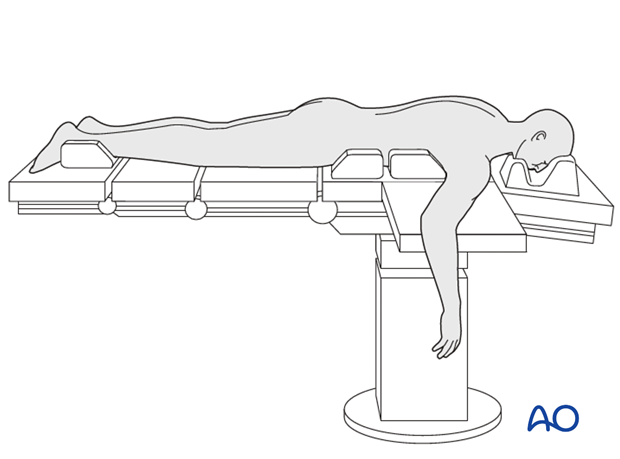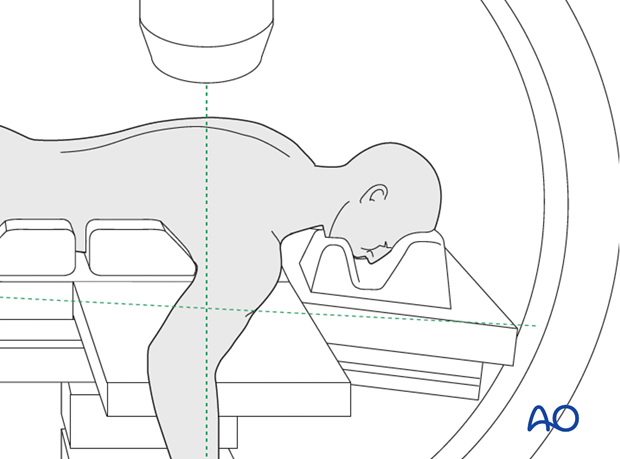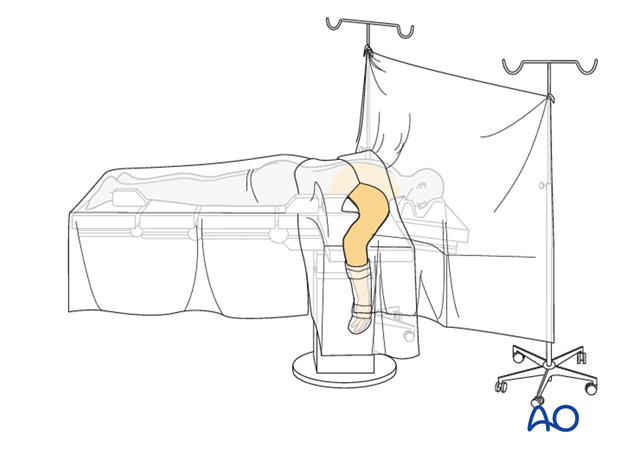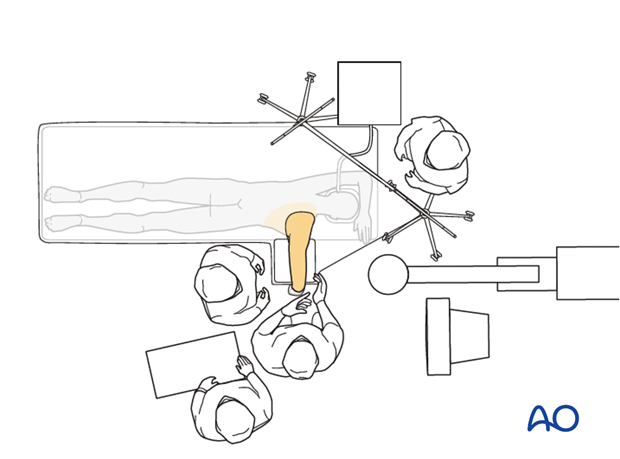Prone position
1. Introduction
Posterior plating and retrograde nailing may be performed in the prone position. This position may also be used for exploration of the radial nerve.

2. Preoperative preparation
Operating room personnel (ORP) need to know and confirm:
- Site and side of fracture
- Type of operation planned
- Ensure that operative site has been marked by the surgeon
- Condition of the soft tissues
- Implant to be used and how (eg, antegrade or retrograde nailing)
- Patient positioning
- Details of the patient (including a signed consent form and appropriate antibiotic and thromboprophylaxis)
- Comorbidities, including allergies
3. Anesthesia
Due to patient position and working area, general anesthesia with or without additional nerve block provides adequate comfort for the patient and the operating team.
4. Patient position
Place the upper arm on a radiolucent arm table or arm rest, with the elbow flexed to 90º.
Support the thorax before fixation of the patient’s head.
Take care to position the head and fix the endotracheal tube securely.

5. C-arm positioning
Introduce the image intensifier from the top of the OR table.
The entire humerus including humeral head and elbow must be visible in two planes with the image intensifier. This works best if the C-arm comes from the top of the table parallel to the table.

6. Skin disinfecting and draping
Disinfect the exposed area from the neck to the hand including the axilla with the appropriate antiseptic.
Drape in such a way as to leave the humeral head area, upper arm, and elbow joint exposed. The hand and forearm should be draped separately with a stockinette well fixed to the forearm.
Drape the image intensifier.

7. Operating room set-up
The anesthetist and anesthetic equipment should be situated at the side of the patient.
The surgeon and assistant stand on the side of the injury.
The ORP stands between (behind) the surgeons.
Place the image intensifier display screen in full view of the surgical team and the radiographer.













